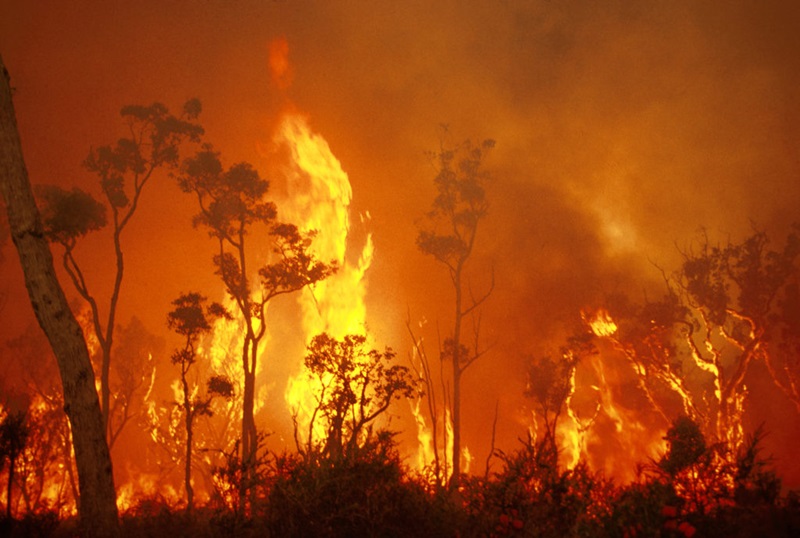Crafting Your Property's Security: A Step-by-Step Bushfire Management Plan Guide
Wiki Article
Vital Tips for Bushfire Monitoring to Guarantee Fire Security

Comprehending Bushfire Danger Levels
Recognizing the differing degrees of bushfire risk is necessary for effective planning and prep work in mitigating prospective threats to lives and residential or commercial properties. Bushfire threat degrees are commonly categorized based on elements such as weather, fuel availability, topography, and historic fire actions. By comprehending these risk areas, degrees and people can proactively execute strategies to minimize vulnerability and improve durability when faced with prospective bushfire events.The very first degree of bushfire risk is reduced threat, where the chance of a bushfire occurring and triggering considerable damage is very little. High-risk degrees symbolize a considerable hazard, with problems conducive to rapid fire spread and severe fire behavior.
Understanding these bushfire danger degrees allows stakeholders to tailor their readiness and response activities appropriately, guaranteeing a effective and aggressive approach to bushfire administration.
Establishing a Defensible Space
Effective bushfire monitoring starts with developing a defensible room around properties to enhance protection versus prospective fire risks. A defensible space is a barrier area that produces a barrier in between a framework and the bordering flammable plant life. This area serves as a crucial line of protection, providing firemens a risk-free area to run and aiding to lower the risk of a fire spreading out to the building.When establishing a defensible area, it is essential to take into consideration the design of the residential or commercial property and the bordering landscape. Clearing up plant life, particularly extremely flammable plants, within a particular span of the property can assist protect against the quick spread of fires. Furthermore, maintaining a well-irrigated area around the residential property can even more improve its defensibility.
Normal maintenance of the defensible space is critical to guarantee its efficiency. This consists of trimming overhanging branches, getting rid of dead plants, and maintaining the area complimentary of debris. By investing effort and time right into creating and maintaining a defensible room, homeowner can significantly boost their opportunities of shielding their homes and possessions throughout a bushfire.
Executing Fireproof Landscaping
When making landscapes to alleviate the risk of bushfires, integrating fireproof elements is important for improving property protection and minimizing fire risks. Applying fireproof landscape design includes tactical planning to develop a defensible space around frameworks. Begin by picking fire-resistant plant types that are much less likely to stir up and create lower levels of combustible products. Select plants with high wetness material, low oil web content, and marginal dead plant life to decrease the risk of fire spread. Additionally, keep appropriate spacing in between plants and maintain them effectively pruned to avoid fire from easily leaping in between vegetation.
Creating an Emergency Situation Emptying Plan
Developing a detailed emergency evacuation strategy is critical for guaranteeing the safety and wellness of people throughout prospective bushfire cases (BAL Report). An effective emptying strategy should outline clear treatments to follow in the event of a bushfire risk, consisting of marked evacuation courses, setting up points, and interaction methodsTo begin producing an emergency situation evacuation plan, it is important to evaluate the certain risks and vulnerabilities of your place. Recognize several discharge courses that result in secure areas far from the fire, taking into consideration variables such as surface, road accessibility, and possible hazards. Establish communication networks to alert locals of an approaching discharge, using techniques such as sirens, text notifies, or door-to-door alerts.
Frequently evaluation and exercise the evacuation plan with all residents or area members to ensure every person comprehends their duties and responsibilities. Conduct drills to check the performance of the plan and make any kind of necessary modifications. By having a well-prepared evacuation plan in position, you can enhance the chances of a secure and organized evacuation throughout a bushfire emergency situation.
Preserving Fire Security Tools
After developing a comprehensive emergency emptying prepare for bushfire cases, it is vital to prioritize the regular upkeep of fire safety and security tools to make certain ideal performance and readiness. Routine upkeep of fire safety and security tools such as fire extinguishers, smoke alarm, fire alarms, and automatic sprinkler is important in protecting lives and residential or commercial property throughout a bushfire. Conducting regular evaluations, testing, and servicing of these gadgets by qualified professionals is important to guarantee they are check my reference in functioning order when needed.Fire extinguishers ought to be checked consistently for stress degrees, visible damages, and proper capability. By diligently maintaining fire safety devices, people can enhance their preparedness and response capacities in the occasion of a bushfire.
Final Thought
In final thought, efficient bushfire administration includes comprehending danger levels, developing defensible rooms, implementing fireproof landscaping, creating evacuation strategies, and maintaining fire security tools. By following these necessary pointers, people can make sure much better fire defense and security for their properties and communities. It is he has a good point very important to prioritize positive procedures to alleviate the risks related to bushfires and to be gotten ready for emergencies.By comprehending the nuances of bushfire threat levels, establishing defensible areas, executing fire-resistant landscaping, producing comprehensive emptying plans, and making certain the maintenance of fire security devices, individuals and neighborhoods can significantly strengthen their resilience against the ravages of wildfires - BAL Report. These suggestions are not only critical for safeguarding against instant fire hazards however likewise for fostering long-lasting fire defense strategies that can make a considerable difference in the face of escalating bushfire hazards
High-risk levels signify a substantial threat, with conditions favorable to quick fire spread and extreme fire habits. Routine maintenance of fire safety tools such as fire extinguishers, smoke detectors, fire alarms, and sprinkler systems is crucial in safeguarding lives and property throughout a bushfire.In conclusion, efficient bushfire monitoring involves understanding danger levels, producing defensible areas, carrying out fire-resistant landscaping, developing evacuation plans, and keeping fire safety and security tools.
Report this wiki page